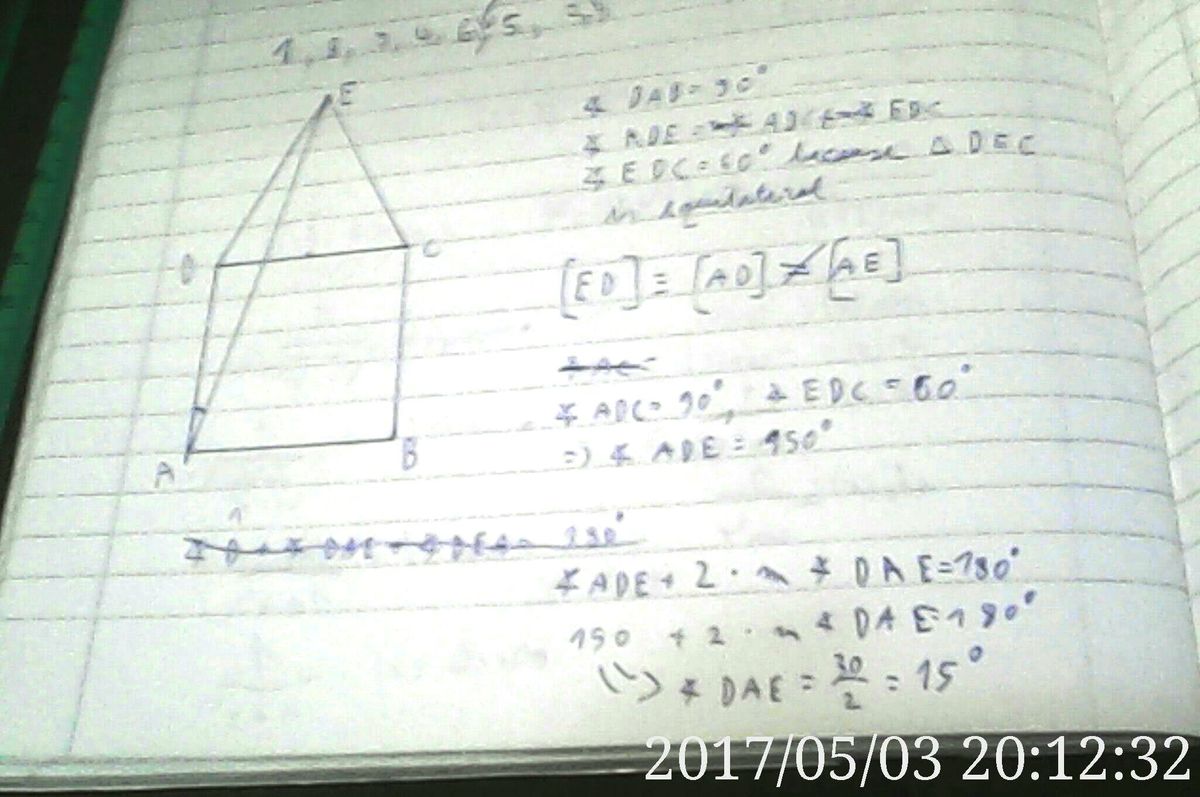Housing an Angle
In the diagram above, A B C D is a square and C D E is an equilaterial triangle.
What is ∠ D A E ?
This section requires Javascript.
You are seeing this because something didn't load right. We suggest you, (a) try
refreshing the page, (b) enabling javascript if it is disabled on your browser and,
finally, (c)
loading the
non-javascript version of this page
. We're sorry about the hassle.
4 solutions
AD is equal to DE, so it is an isosceles triangle. Knowing that the angle ADE is 150 (90+60) [60 because DEC is a equilaterial triangle], so the sum of DAE and DEA angles must be 30. Once they are the same, 30/2 = 15
Might be a stupid question, but how do you know AD = DE?
An equilateral triangle is supposed to have congruent sides So AB = BC = CD = AD = DE =EC
explaining what he basically did, by simetry he saw that the left angle alpha at (A) its equal to left angle on (E), then he cut the square to make it into 2 rectangular triangles ( its not really necessary ) but now he can clearly see that the angle down on point D is 90 ° (like i said its not necessary because u can clearly see that) since triangle DEC is isosceles angle (D) (E) and (C) are all equals and 60 ° now he know that angle D = 90 ° + 60 °, also that A and E (left angles) are equals so he had the relation 180 ° - 150 ° = 2a (I explaned that because i can't read it but i can read some things and my solution was very similiar to his solution.
Consider △ A D E . Since A D = D E , ∠ D A E = ∠ D E A .
∠ E D A = ∠ E D C + ∠ C D A = 6 0 + 9 0 = 1 5 0 ∘
Since the sum of the interior angles of a triangle is 1 8 0 ∘ , we have
∠ D A E = ∠ D E A = 2 1 8 0 − 1 5 0 = 2 3 0 = 1 5 ∘

In the isosceles △ A D E from the sum of angles ∠ D A E = 2 1 8 0 ∘ − ( 9 0 ∘ + 6 0 ∘ ) = 1 5 ∘